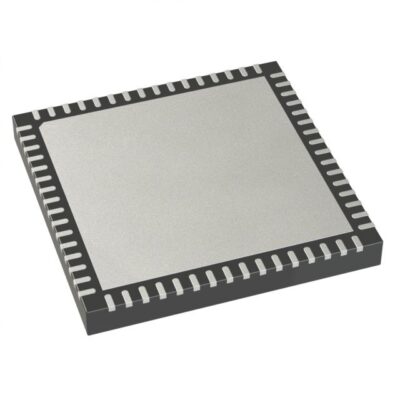ATXMEGA128A3U-MH
Part Number: ATXMEGA128A3U-MH
Manufacturer: Microchip Technology
Description: IC MCU 8/16BIT 128KB FLASH 64QFN
Shipped from: Shenzhen/HK Warehouse
Stock Available: Check with us
ICRFQ.com - Electronic Components Distributor in China Since 2003

Part Number: ATXMEGA128A3U-MH
Manufacturer: Microchip Technology
Description: IC MCU 8/16BIT 128KB FLASH 64QFN
Shipped from: Shenzhen/HK Warehouse
Stock Available: Check with us
| Datasheet | |
|---|---|
| Category | Integrated Circuits (ICs) |
| Family | Embedded – Microcontrollers |
| Manufacturer | Atmel |
| Series | AVR? XMEGA? A3U |
| Packaging | Tray |
| Part Status | Active |
| Core Processor | AVR |
| Core Size | 8/16-Bit |
| Speed | 32MHz |
| Connectivity | I2C, IrDA, SPI, UART/USART, USB |
| Peripherals | Brown-out Detect/Reset, DMA, POR, PWM, WDT |
| Number of I/O | 50 |
| Program Memory Size | 128KB (64K x 16) |
| Program Memory Type | FLASH |
| EEPROM Size | 2K x 8 |
| RAM Size | 8K x 8 |
| Voltage – Supply (Vcc/Vdd) | 1.6 V ~ 3.6 V |
| Data Converters | A/D 16x12b; D/A 2x12b |
| Oscillator Type | Internal |
| Operating Temperature | -40°C ~ 85°C (TA) |
| Package / Case | 64-VFQFN Exposed Pad |
| Supplier Device Package | 64-QFN (9×9) |
The ATXMEGA128A3U-MH is a microcontroller in the Atmel AVR XMEGA family, which is recognized for its low power consumption, strong performance, and extensive peripheral support. In this detailed overview, we will look at the ATXMEGA128A3U-MH microcontroller’s essential characteristics, capabilities, and applications.
The AVR XMEGA series is a unique line of microcontrollers known for their outstanding combination of low power consumption, high performance, and a wide range of peripheral functions. These microcontrollers, developed by Atmel, which is now part of Microchip Technology, are based on the AVR enhanced RISC architecture, distinguishing them in the realm of embedded systems.
The improved RISC (Reduced Instruction Set Computer) architecture is the foundation of the AVR XMEGA family’s prowess. Unlike other microcontrollers, which take numerous clock cycles to execute instructions, the AVR XMEGA can do so in a single clock cycle. Because of these exceptional capabilities, throughputs per megahertz reach one million instructions per second (MIPS). System designers can optimize power usage while retaining high processing speed thanks to such efficiency.
The ATXMEGA128A3U-MH’s AVR CPU has a large instruction set and 32 general-purpose working registers. Notably, all 32 registers are directly coupled to the arithmetic logic unit (ALU), allowing access to two independent registers in a single instruction processed in a single clock cycle. This architecture improves code efficiency and allows for much faster throughput than conventional single-accumulator or CISC (Complex Instruction Set Computer)-based microcontrollers.
The ATXMEGA128A3U-MH, an AVR XMEGA family member, has a slew of capabilities that make it an appealing solution for a wide range of embedded applications. Here are some of its important characteristics:
The microcontroller has flash memory that can be reprogrammed in-system and supports read-while-write. This ensures that the application firmware is updated and modified without disrupting its operation.
The ATXMEGA128A3U-MH has an extensive list of peripherals, including:
The ATXMEGA128A3U-MH has five software-selectable power-saving modes to enhance power efficiency:
Power-Saving Modes for Efficient Operation
The ATXMEGA128A3U-MH’s power-saving settings are vital for managing energy consumption while retaining critical functionality. These modes allow you to tailor the operation of the microcontroller to the unique requirements of your application:
Finally, the AVR XMEGA ATXMEGA128A3U-MH microcontroller is a flexible and powerful choice for a variety of embedded applications. Its unique combination of performance, power efficiency, and a variety of peripheral capabilities makes it an excellent choice for applications that require both processing speed and energy utilization to be maximized. Engineers and developers can create new and efficient embedded systems with the support of Atmel’s extensive development tools and resources.
Finally, the ATXMEGA128A3U-MH microcontroller, a shining star in the AVR XMEGA family, offers exceptional performance, versatility, and power efficiency. Because of its vast feature set, effective power management, and seamless integration capabilities, it is the appropriate choice for a wide range of projects.
It is now up to you to fully grasp its potential. Whether you’re a seasoned engineer or a passionate hobbyist, the ATXMEGA128A3U-MH can bring your innovative ideas to life. It is also competitively priced from ICRFQ, a well-known Chinese electronic component vendor.
Don’t put it off any longer. You can delve into the world of innovation with the ATXMEGA128A3U-MH and ICRFQ. Create, discover, and influence the future of embedded technology – your adventure starts today, and the possibilities are limitless.
WhatsApp us